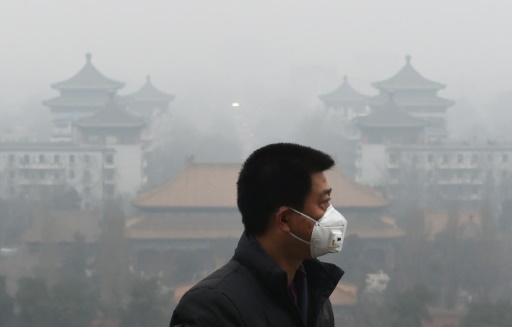-
Tips for becoming a good boxer - November 6, 2020
-
7 expert tips for making your hens night a memorable one - November 6, 2020
-
5 reasons to host your Christmas party on a cruise boat - November 6, 2020
-
What to do when you’re charged with a crime - November 6, 2020
-
Should you get one or multiple dogs? Here’s all you need to know - November 3, 2020
-
A Guide: How to Build Your Very Own Magic Mirror - February 14, 2019
-
Our Top Inspirational Baseball Stars - November 24, 2018
-
Five Tech Tools That Will Help You Turn Your Blog into a Business - November 24, 2018
-
How to Indulge on Vacation without Expanding Your Waist - November 9, 2018
-
5 Strategies for Businesses to Appeal to Today’s Increasingly Mobile-Crazed Customers - November 9, 2018
Beijing’s air pollution the highest since 2013
Permissible levels of PM (particulate matter) 2.5 and PM 10 are 60 and 100 micrograms per cubic metre respectively and consistent exposure to anything beyond that can harm the respiratory system as the particles embed themselves deep inside the lungs.
Advertisement
The smog is expected to dissipate when a cold front arrives on Thursday afternoon, according to the Beijing Municipal Environmental Monitoring Centre.
Last week, Chinese authorities faced criticism when they failed to issue a red alert after pollution rose 40 times more than level considered safe by the World Health Organisation.
The alert was upgraded to red yesterday evening.
During that period, PM2.5 levels were actually higher than 500 at one point, but the BBC says the Red Alert was warranted due to the fact the smog is supposed to stay intense for several days.
For consecutive days last week, the capital of 22 million was shrouded in smog and, following a brief respite, smog at “very unhealthy” levels returned to Beijing yesterday.
Four-tier alerts-blue, yellow, orange and red-will be issued on “heavy pollution” days.
China’s state-run Xinhua news agency reports on the extent of Beijing’s smog crisis and restrictions on vehicle usage.
According to the U.S. embassy classification, anything beyond 300 is categorised “Hazardous” warranting people to take preventive measures like avoiding outdoor exposure.
The level in Beijing reached more than 256 micrograms per cubic metre in some of the worst-affected areas.
Authorities in the capital were heavily criticised after only issuing an orange alert for last week’s pollution. A study led by atmospheric chemist Jos Lelieveld of Germany’s Max Planck Institute and published this year in Nature magazine estimated that 1.4 million people each year die prematurely because of pollution in China. Beijing has pledged that emissions will peak “around 2030”, without saying at what level and implying several years of further increases.
Advertisement
Most of the country’s carbon emissions come from burning coal to heat homes and to fuel power plants, a practice that spikes during the cold winter months. Automobile emissions account for over 30 per cent of the air pollution in China.




























